Well, we’ve put this off for far too long really. Battlegroup is what drew me back into miniatures wargaming and started a fire that burns on the oak wood of historicals gaming. Today we’re looking at the ruleset, expansions and what makes it the ideal wargame for WW2 from platoon scale up.
The thing with historicals is that most rulesets are miniature agnostic. If you’re into WW2, you’ve got the big names of Flames of War and Bolt Action that dominate the tournament circuit, closely followed by Chain of Command for a more narrative and campaign-driven experience. Battlegroup joins the latter, with a Games Workshop pedigree that turned into a whole ecosystem of period theaters. I’ll be forgiven for not listing up the myriad of WW2 games that are out there, we’re talking about Battlegroup today!
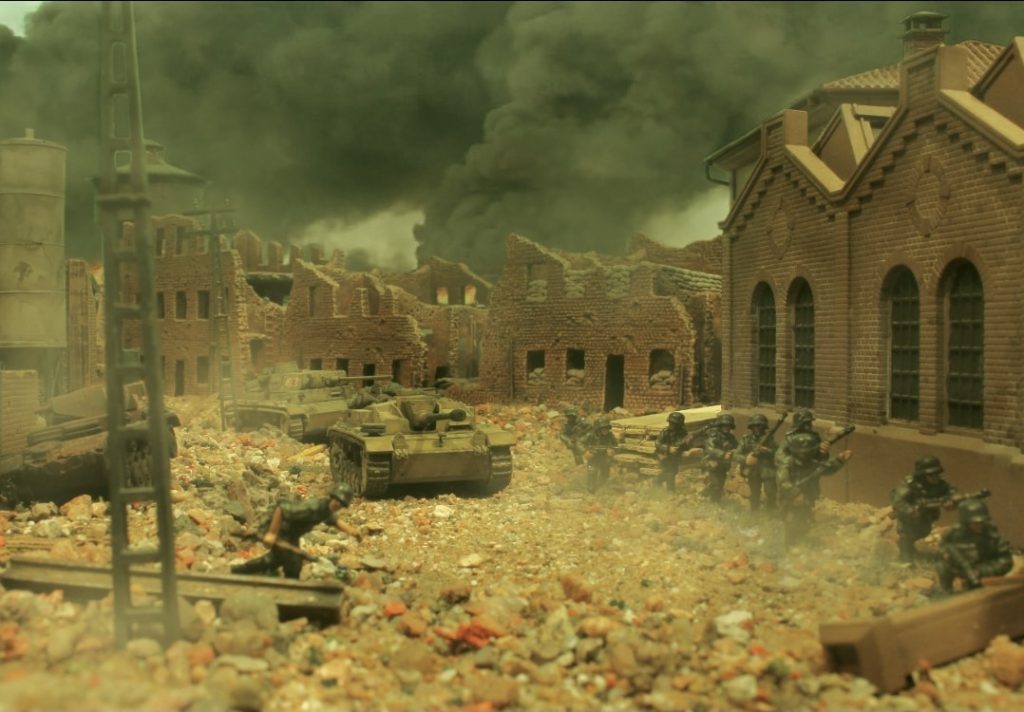
Getting started, or your theater selector
Before we dive into the meat and bones of the mechanics that make it stand out from other games, let’s see what’s on the menu. At the moment, Battlegroup has two starter rulebooks. A big hardback, handy in a pinch to clobber a nazi, and a small A5 barebones core ruleset you can slip into the backpack of someone who plays Flames of War. The hardback will get you a running start with army lists for the 3rd Canadian Division and the 12th Panzer ss, situating it after the Normandy invasion around 1944. To really get into the game, your rulebook is best accompanied by the theater rulebook that suits your fancy or model collection. There’s a bunch out there, from the desert to the Alps.
Battlegroup Kursk is the OG, built on the foundations of Kampfgruppe Normandy, published by Warhammer Historicals. It’s the first in the series if you’re looking at the publishing date. Based on Operation Citadel, there are army lists and a campaign included for Russian tank and rifle divisions, grappling with German panzer and infantry divisions. Other books that handle the war in the eastern theater are Barbarossa, and Spring Awakening, which covers the war In Hungary up to Vienna. Stalingrad is up for pre-order at the moment of writing, after which you will have lists
The Western front is covered in Blitzkrieg, starting out in Poland in 1939 up to 1941, and takes up the action again with Overlord, Beyond the Beaches, Westwall and Market Garden. Wacht Am Rhein takes you into the freezing forest of the Ardennes, up to the last desperate battles in Germany with Fall of the Reich.
For the desert rats; Tobruk and Torch will give you plenty of material to use Grants. The Pacific theater is covered in the aptly named Pacific War book.

After Stalingrad, Italy will round out the European campaigns. What this means is you can game the whole dang war. Every book contains lists for appropriate forces, and contains a fair chunk of well-researched history of the battles and armies that fought them. I can safely say that every vehicle or unit that took part in the specific battles is included, so if you really want to use the weirdo tanks you do you, and send us some pictures please. The books are nicely laid out and are accompanied by historical photographs and beautifully made tables and models. Every book has the feel of a rulebook, with added painting guides, quick references, and in some cases alternate Battle Rating counters to use in your games. You’ll also get smaller reference cards for the vehicles with the appropriate guns and options (you can also order these separately). Coupled with the campaign included, the amount of bang for your buck is very good. Combine any book with the softback A5 rulebook, and you can hit the ground running if you have a painted army.
Every book is worth a mini-review really, but we’re only talking about the core rules and mechanics here so you’ll have to wait for that.
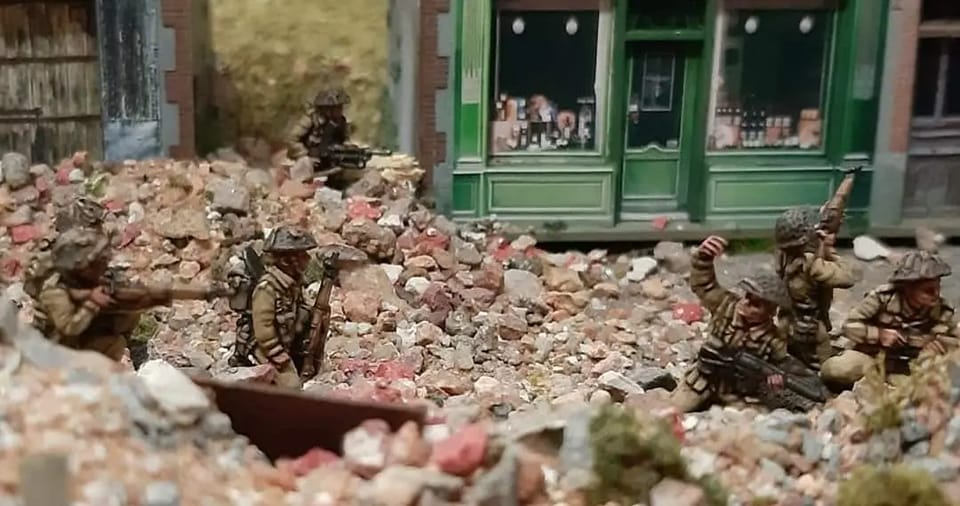
Actually getting started on the tabletop
Written with a 15/20mm scale in mind on a 6×4 board, going bigger is possible of course, but you’ll need a lot of table to really make it shine and get the most out of the maneuvering in 28mm. While we’re ticking the regular review boxes, pre-measuring is not allowed, and line of sight is true and based on common sense. Before people start screaming in the comments: this is a game where you want to have and use cover, preferably lots of it. If you’re using multis-based infantry, you’ll have to declare if the unit is in cover anyway, even if a bit of base is sticking out. Worst case scenario, you roll off. I don’t really have a problem with this, as it is based on reality and not necessarily on a silhouette or some other abstracted thing. Infantry for example always have some sort of cover as they’ll be moving tactically, making use of the terrain. It also means that you don’t need to be a pedantic moron and call a shot on a tank because a bit of barrel is poking out from behind a house.
The object of the rules is to give you a realistic wargame, without getting bogged down in the sort of detail you get from more tournament-oriented things. It is a straightforward system without being simple. There are points values, and you can technically play a tournament using them, but the game really shines in the recreation of battles and scenarios or campaigns. It rewards tactics used at the time, and you’ll probably want to adapt those, otherwise you’ll soon find out why sending tanks out without infantry support will probably not end well.
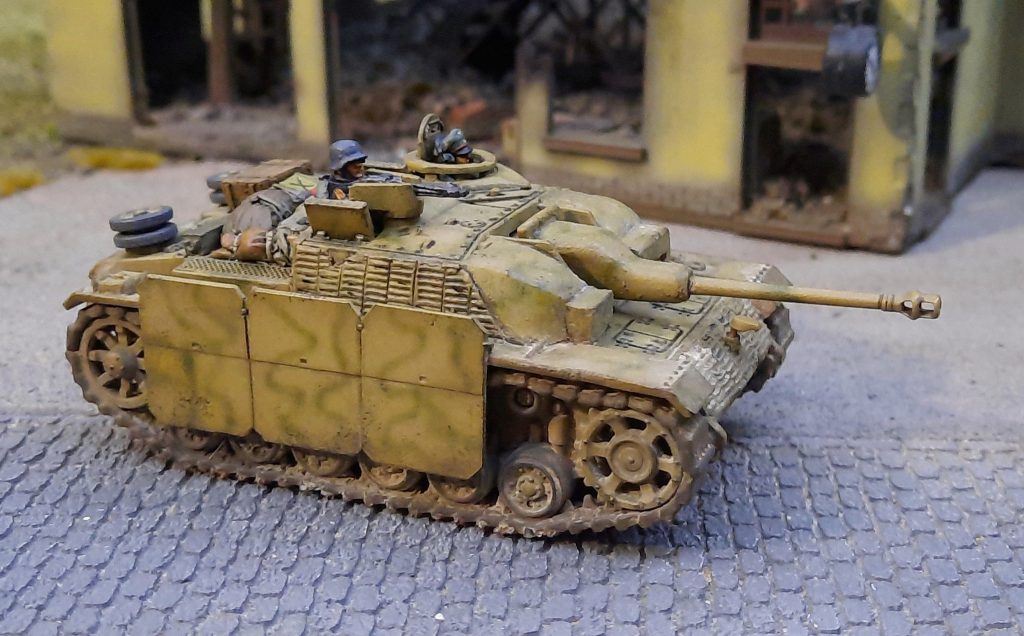
As mentioned, the different books (with some exceptions) give you a series of linked pivotal battles you can use as a campaign as well, with the order of battle and lay out of the battlefield. In effect, each book can be a project where you collect and paint the armies and scenery needed. This is a nice way to get started and keeps it manageable if you want to explore gaming WW2. Staying at the 15/20mm level gives you a lot of options for getting started with PSC boxes. Since 20mm is basically 1/72, there is a whole world of model companies to get your (air)fix. There’s a ton of starters at the 15mm scale from Battlefront, which can get you up and running in no time (you’ll need to get some infantry in most cases as they’re fairly tank heavy overall).
Apart from tape measures, dice and some tokens to mark certain effects, you’ll need Battle Rating Counters. These can be copied or cut out of the rulebook and need to be laminated, of course, and put into a dice bag or something like that. There are third party sellers out there who do these counters in mdf, and I would suggest investing in a set. Etsy’s a good bet to find some.
Battlegrouping
The reason you want to sling some cash for a nice set of Battle Counters is simple; it’s one of the key mechanics of the game. The Battle Rating of your army is an overall indicator of force morale and stuff happening off the battlefield. Your Battle Rating is made up of the sum of each rating of your individual units. Let’s take a look at a German Panther, which is very good and has a battle rating 3. Taking a platoon of 3 will give you 9 points, which is a lot. Every time a unit is destroyed, you take a token out of the bag. If you lose an objective, take a token. Get out-scouted? Token. Lose a senior officer? That’s a token. Get hit by an air attack? You bet that’s a token! Tokens range from 1-5 points. Getting a couple of 5-point tokens is more commonly known as “aw shit”. If the total number of the tokens you’ve pulled surpasses your battle rating, you book it and the game is over. So taking a mandatory grenadier platoon and a bunch of panthers is certainly a thing you can do, and at a 1000 points you’ll have a BR of 41, which means 10 tanks and a sole platoon of infantry. Every unit you lose will hurt, and you will be outmaneuvered and have to be very careful not to lose the game. Also: the Battle Rating of your force might be public knowledge, but the total number of the counters you’ve taken is not. So if there’s a pile of tokens on your opponent’s side, pushing your luck with a risky move can pay off.
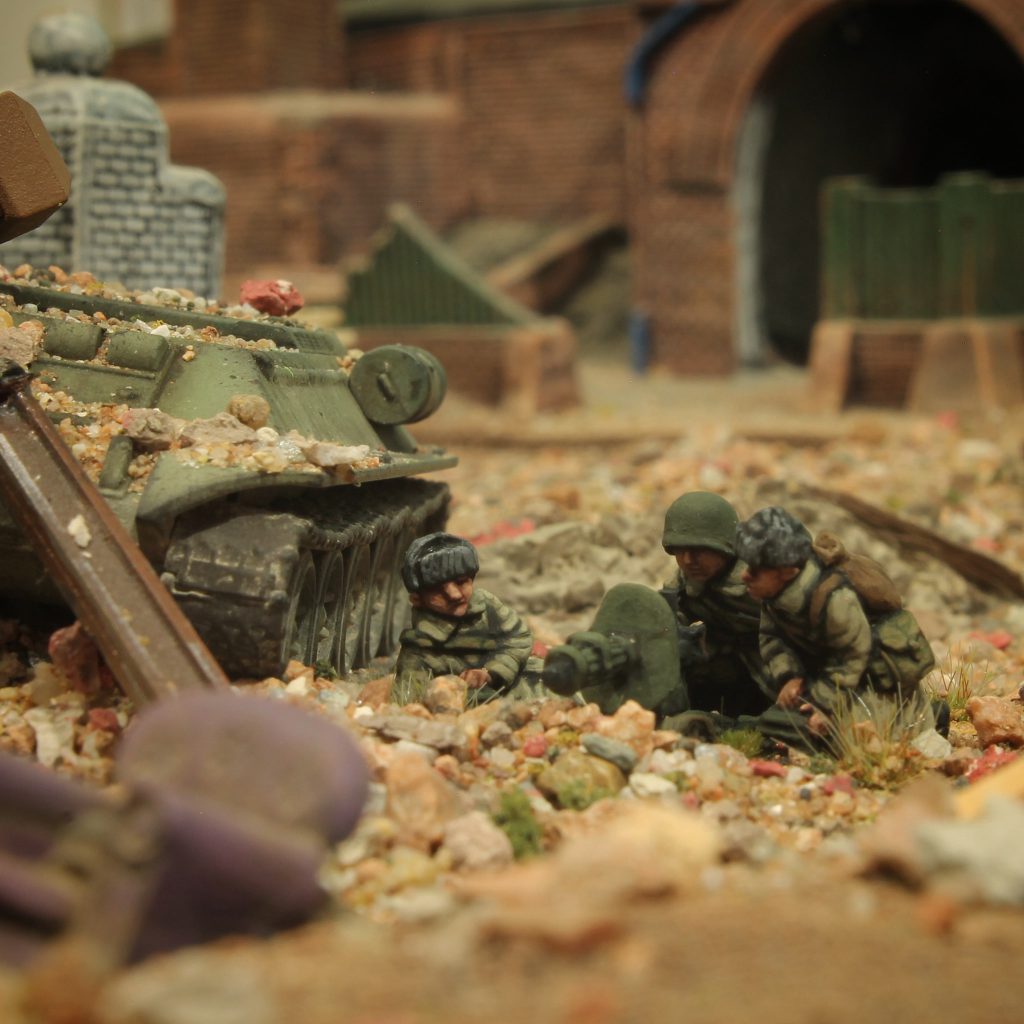
On the tabletop, this translates to a very fluid game. Initiative changes, and you need to think on your feet, weighing your options. The Battle Rating system isn’t just something that comes up passively. In the shooting phase of things, you have two options: aimed or suppressive fire. Aimed fire can whittle down your opponent one man at a time, but suppressing your enemy and pinning them is a very good tactic. To remove pins, you can choose to take a counter, otherwise the unit can’t receive an order. Especially if you’re a couple of turns in, taking a chance to unpin key units can be a tough decision.
This neatly ties into the orders system. Orders are the next big mechanic that dictate the game. You can only activate a unit by giving them orders, and at larger games you’ll have to make some tough choices if you have a bad roll. Depending on what stuff you bring to the table, you’ll get a set amount of orders coupled with a couple of dice. Every officer you bring along gives you an order, and the level you play at determines the number of D6 your roll for orders at the start of your turn. A company game lets you roll 3D6 for example, plus extra orders for the officers your bring along. The orders themselves are pretty straightforward: maneuver and fire, shoot twice, embark in a vehicle, do a double move, it’s fairly standard stuff. You can also put a unit on Ambush Fire, or Reserve Move, which are reactions you save for your opponent’s turn. Unlike most IGOUGO systems, you will not be relegated to coffee duty when it’s not your turn. A clever tactical use of Reserve Move even more so than Ambush Fire is hard to pull off in your first games, but it’s a game changer and you’ll learn to play around with it. You can only give orders to units that are not pinned, and if you can’t give out orders, you’ll get an instant game over as you’re effectively pinned down. So you have to keep an eye on that as well!
In most battles you probably won’t start with all of your units on the table. In fact, there’s a scouting phase before the game kicks off in which you recon the terrain with special troops or light vehicles and armor. This puts the pressure on from the start, as there’s a chance you’ll have to take some counters in the first turn if you haven’t invested in any scouting units. Units trickle onto the tabletop as you give them orders to move up.
In-game every unit has a certain morale rating as well to tie it all together. Those medals of honor are not made in bulk, and people will get out if the rate of attrition is too high. Units can and will run away if they’re pinned and losing men. An interesting fact in the late war books; some veteran units are actually more keen to preserve themselves after having seen Enough Of This Shit, and are not more dependable than regular troops. Not only is this historically accurate, it’s a nice departure from the veteran supersoldier as depicted in other games. Seeing through a whole war makes you better at surviving, not necessarily wiping out the other side.
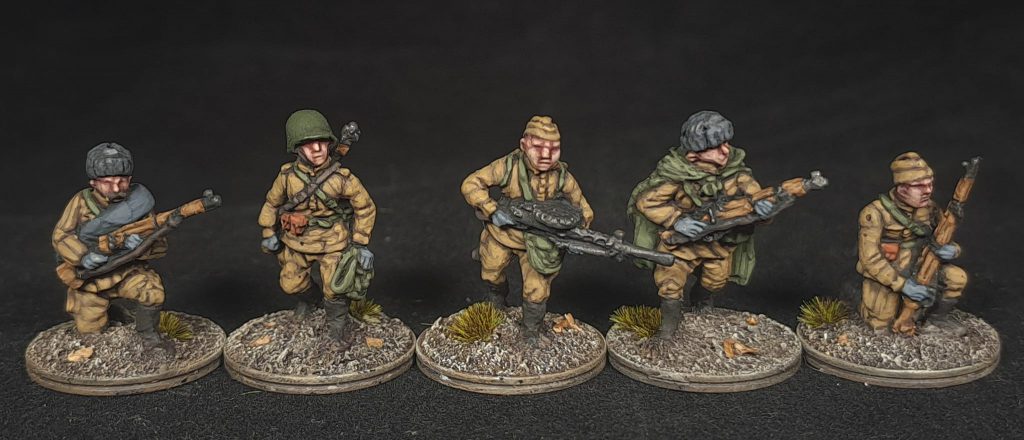
Fog of war and blowing stuff up
You’d probably expect some sort of thing to represent the use of smoke grenades on the battlefield, but that is incorporated in the spotting rules for aimed fire. You’ll get a number of modifiers based on cover, if the unit moved or at what range you’re taking a shot. There’s a difference between small arms fire, armor and antitank weapons or emplaced guns as well. This works really well and there’s no faffing about with smoke markers or scattering grenades. Next to that, everything that’s on the table has an ammo count as well. In the case of small arms, there’s a chance you’ll pull a special counter that gives a random unit an out of ammo chit. You’ll have to pull back and resupply. Armor has a certain number of rounds available, and you’ll have to choose in how you stock up before the battle. You can do a mix of High Explosive and Armor Penetrating, or stick to one type. Every shot counts in this way, and you won’t be taking potshots at an obscured target at long range because you will need the ammo later on.
Since WW2 is filled with all manner of tanks, the combat is suitably deadly. A tank sitting out in the open is target practice and infantry can be a big threat as well. If you go off solo with armor it will end up as a big metal roadblock while its ammo cooks off. Tactical movement and clever use of cover is needed to keep your tanks and vehicles alive. Every tank (or vehicle) profile has different movement rates for on- or off road driving. Scout vehicles zip around easily on roads, and in general movement is fast, so you have to take rather large threat ranges into account.
Next to tanks, aircraft and artillery have a big role to play. Aircraft only come out to play when you pull the Air Attack counter, although you can take a spotter to make sure your planes have a greater chance of arriving. Artillery can be bought for points and boy is there a lot to choose from! Since the big artillery pieces are usually a couple of miles off or at the rear of your army, there’s no need to represent them on the tabletop. You can choose from pre-registered target points, timed barrages, artillery support requests and other stuff that’s specific for the theater and army. Generally speaking, when artillery comes through it is devastating. The trick is to get the rounds on target, and the difficult bit is the communication with the rear. You’ll have to roll a couple of times to make sure your request goes through (you can buy spotters to increase your chances), and doesn’t deviate off the table. Technically you can make a custom army that’s a platoon, some spotters and maybe a tank, but artillery does not add to your Battle Rating so you have to be very sure the guys are at their guns and your lines don’t get scrambled.
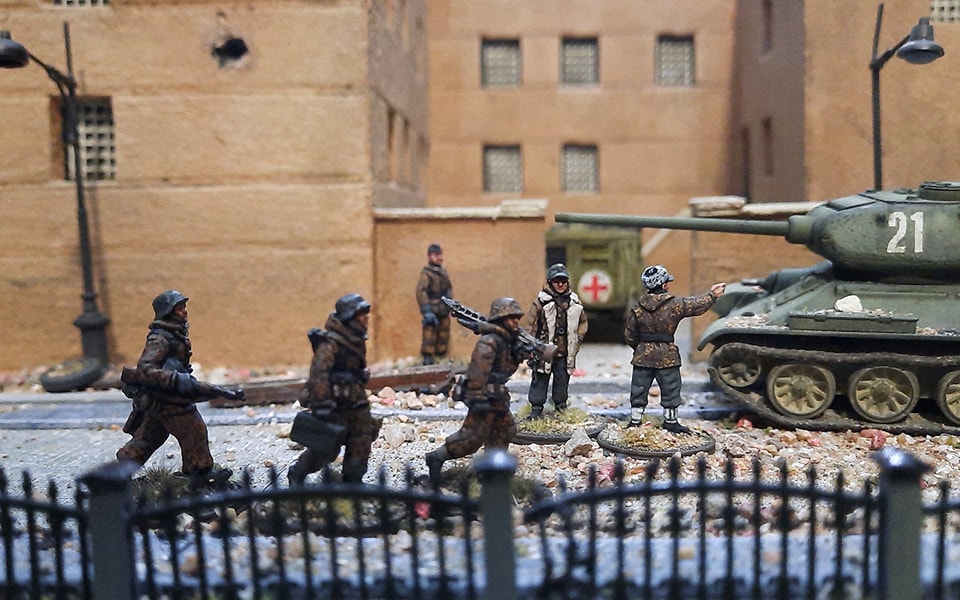
A little less conversation
Trying to explain Battlegroup to a fresh-faced wargamer is a bit difficult. In the previous paragraphs I’ve touched upon a number of things that define playing the game, but for every bit I mention there’s an exception or special rule that defines a certain army or tactic used in the war. The trouble is that it might become confusing or a bit much, while in reality the play experience is very smooth. The different mechanics interlock elegantly, nothing feels tacked on. Gameplay feels engaging and there is little down time unless your opponent is particularly slow. There is no feeling of wasted turns, and decisions matter. Like all good games, using contemporary real-world tactics will reward you, and the Battle Rating and command system keeps things balanced. There is a sweet spot really good games hit, where you’re engaged, initiative changes and the battle isn’t decided until the last round, and Battlegroup excels at this. It scales up perfectly, with smaller actions being as tense as massive tank battles, and lends itself to a day-long multiplayer. There’s a reason the core mechanics are used in Northag and that’s simply because it works on multiple levels.
If you want to break out of 28mm, and want to get your WW2 gaming on in a larger scale, battlegroup won’t let you down. WW2 is an interesting period to get involved in, and one of the most well-researched at that. Give it a whirl if you’ve got some miniatures knocking about, and you’ll be pleasantly surprised and probably won’t look back.
You can find the rules, both print and pdf, on the Plastic Soldier Company site
If you want to get involved online, The Battlegroup facebook group has you covered



You must be logged in to post a comment.